- - - - - - - - - - - -
1) O mně / About me
2) Tvorba / Work
3) Kontakt / Contact

Sadař, linoryt - matrice, 2010 / The Fruit Grower, linocut - matrix, 2010
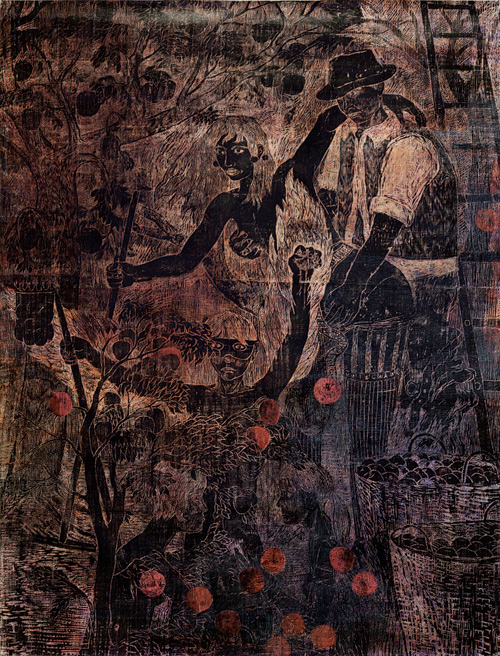
Sadař, dřevořez - matrice, 220 x 150 cm, 2010 / The Fruit Grower, woodcut - matrix, 220 x 150 cm, 2010
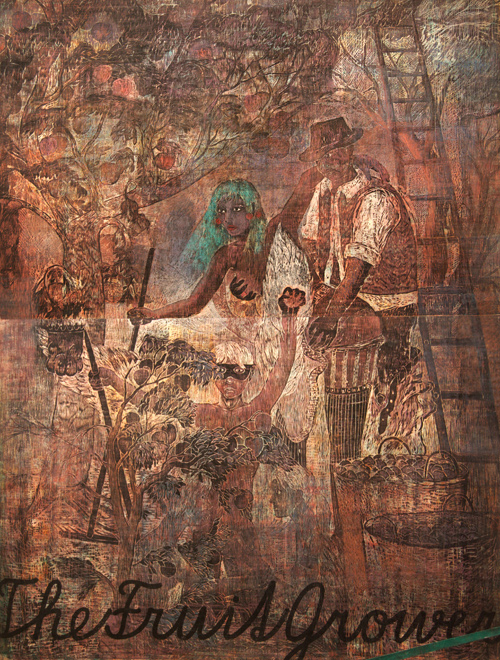
Sadař, dřevořez, 220 x 150 cm, 2010 / The Fruit Grower, woodcut, 220 x 150 cm, 2010
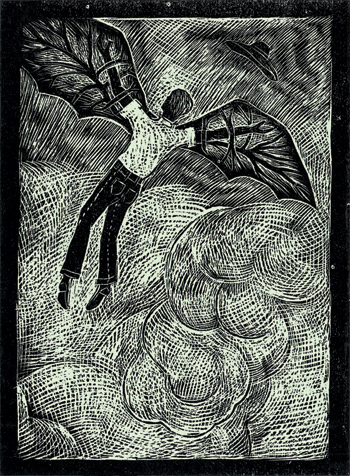
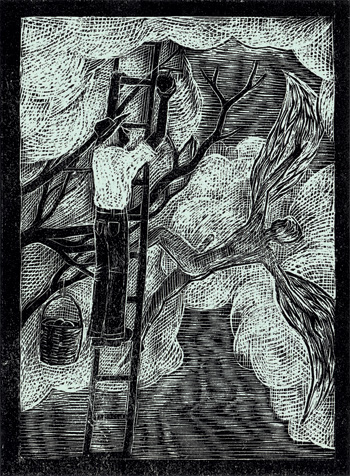
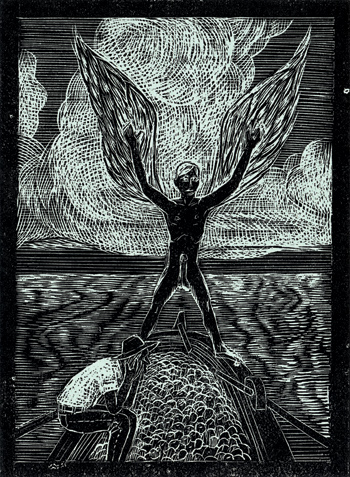
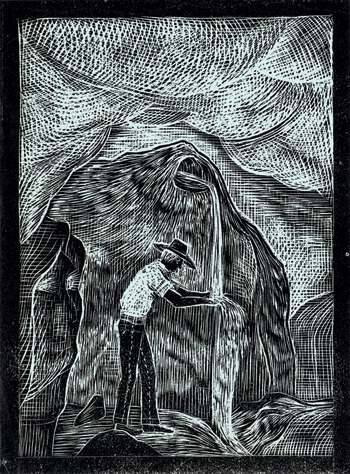
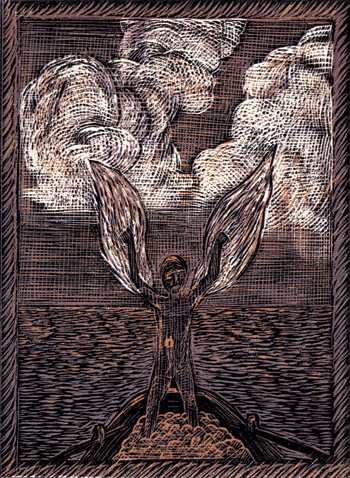
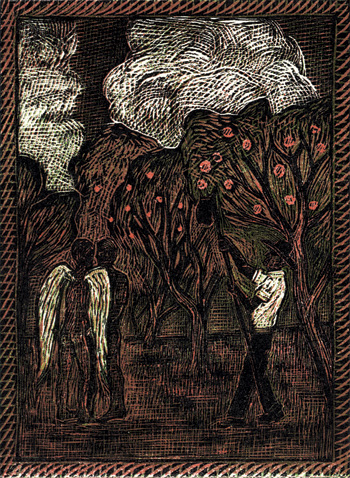
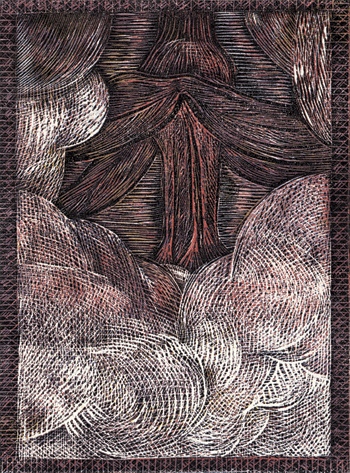
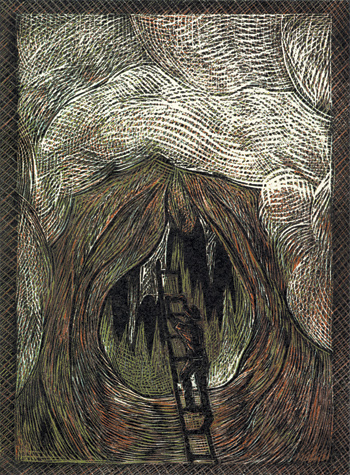
Sadař, rytiny, 10 x 14 cm, 2011 / The Fruit Grower, engravings, 10 x 14 cm, 2011

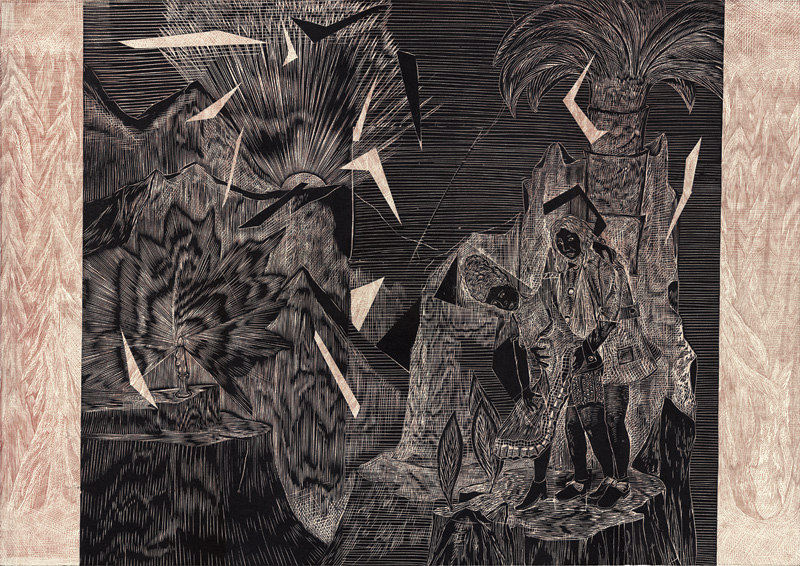
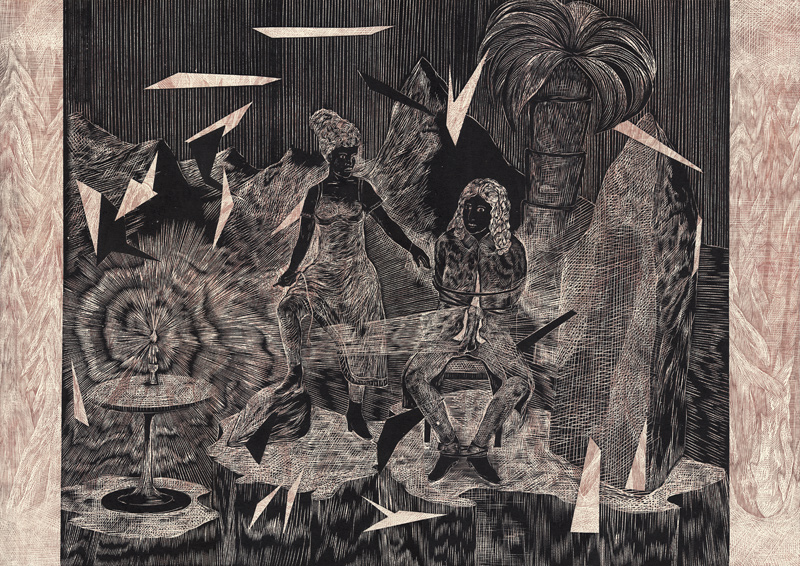
Rokokoví hrdinové, linoryt, 50 x 70 cm, 2010 / Rococo Heroes, linocut, 50 x 70 cm, 2010
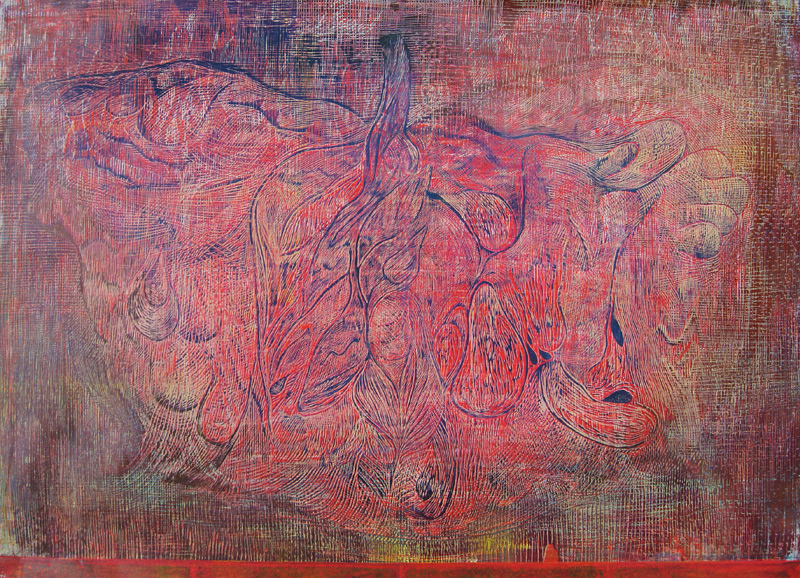
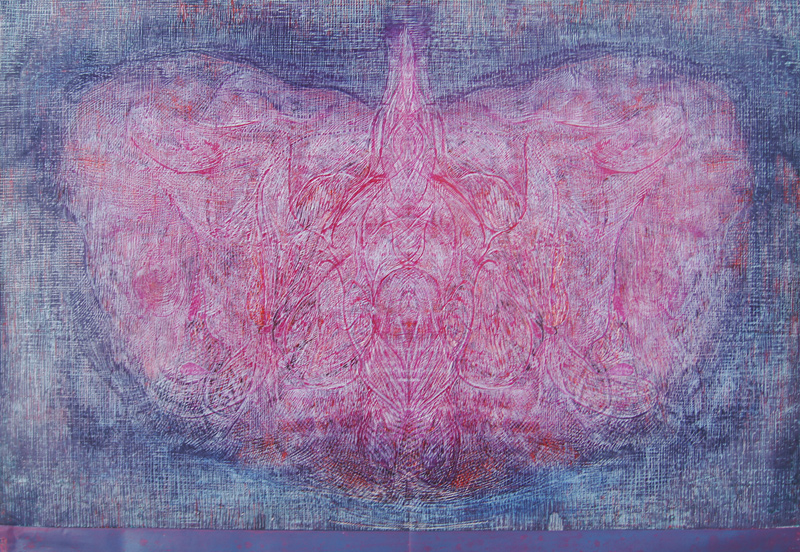
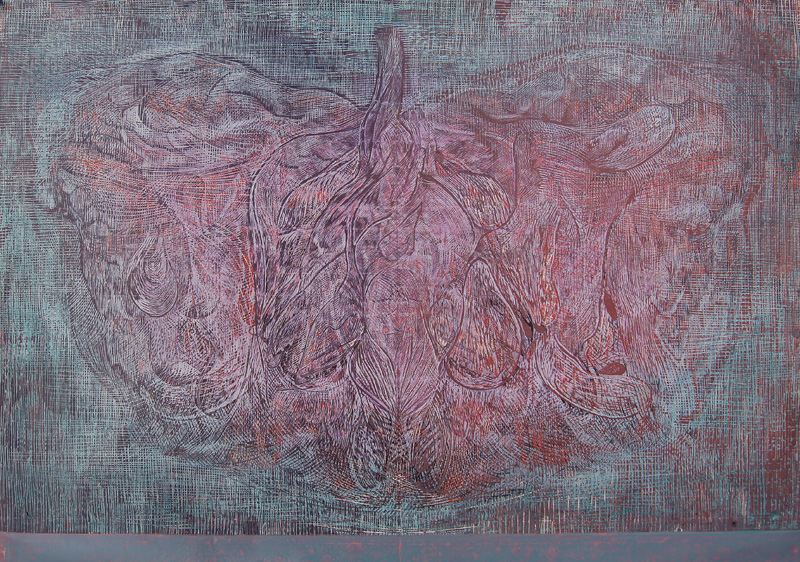
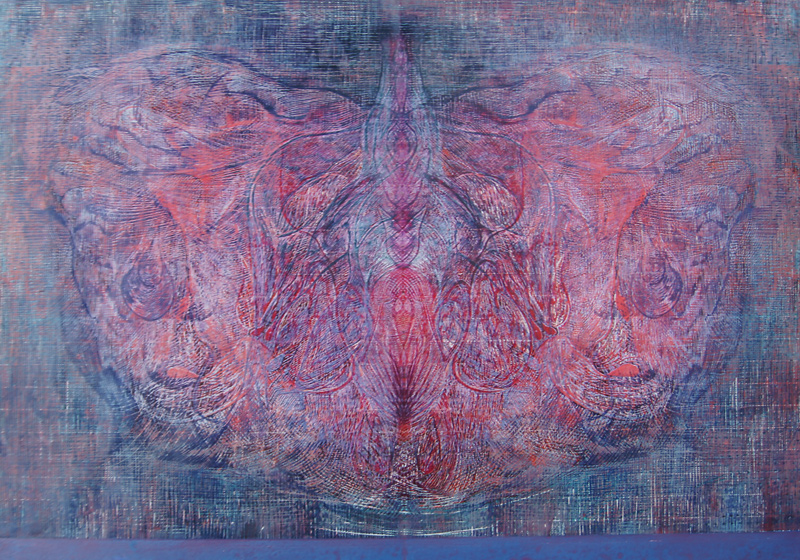
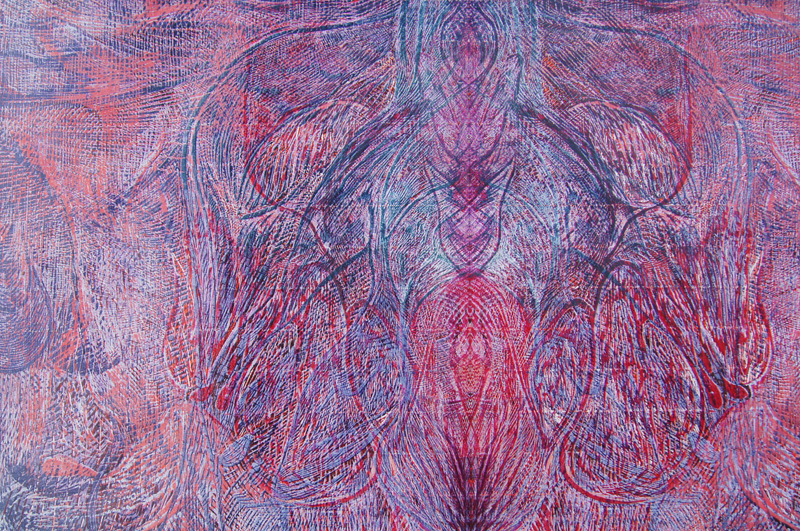
Dužniny, linoryt, 2010 / Fleshes, linocut, 2010
Sadař
11. 1. 2011, Na nivách, Řásná
Jitko, píšu trochu ve spěchu Sadařovo poselství, protože chci ještě dnes stihnout pošťačku v Řásné. Mezi moji chatičkou a civilizací
jsou závěje sněhu, které musím na běžkách nebo pěšky překonat. Ruský sněžný skůtr značky Buran (Bouře) se neosvědčil, doslova
"žral" jeden litr benzínu na jeden kilometr. Ovladatelnost tohoto třicet let starého půltunového stroje byla takřka nulová. Buran
jezdil pořád rovně. Když jsem chtěl zatočit, tak bylo nutné zastavit, vepředu trhnout lyží příslušným směrem a z boku ještě Burana
nakopnout, aby se srovnal. Při jízdě Buran mohutně burácel zahalen oblaky dýmu, a to, že přijíždí Bouře, jsem viděl na vyděšených
tvářích běžkařů, které jsem potkával. Ještě jedna perla - Buranovi vzadu svítilo jasně červené koncové světlo, asi jako připomínka
starých časů, nebo aby do něho zezadu při jízdě krajinou nenarazila srna.
Ale zpět k Sadařovi. Ten první nápad přišel s rozhlasovým vysíláním na Praze nebo Vltavě (jiné stanice zásadně neposlouchám),
kde vysílali pořad o Dolním Rakousku. Tam je zvykem pálit kořalku ze všeho, co dům dá a tomuto výpalku se říká Obstler - Sadař.
To mě velmi zaujalo, neb pálím stejným způsobem, zvláště pak v dobách nouze, kdy je ovoce málo.V té době jsem také vymýšlel název
pro výstavu v Lipsku a Obstler se mi pro tuto příležitost velmi líbil. Jenomže pálení kořalky je velmi málo pro uskutečnění výstavy
a tak "musel" vzniknout první obraz Sadaře. Je to rozměrný dřevořez, na kterém Sadař s vyhrnutými rukávy a v kloboučku objímá svoji
pomocnici. Ta má přihlouplý výraz v obličeji, ale za ušima má zavěšené třešničky, asi aby se dojem trochu vyrovnal. V dolní části obrazu
je hezký chlapec (možná anděl) se vztyčenými okřídlenými pažemi. V jedné dlani tiskne jablko tak silně, až z něho vytéká šťáva.
Klobouček, vyhrnuté rukávy a anděl, to jsou atributy, které provází Sadaře i v dalším cyklu rytin, tentokráte drobných rozměrů.
Ve třetím cyklu Sadař vystupuje "inkognito"v přestrojení za rokokovou porcelánovou fi gurku. Ani se mu nedivím, se svojí
pomocnicí tam totiž na mých tiscích páchá neřestné hrátky s bičíkem v ruce. Snažil jsem se mu vysvětlit, že by neměl takto na
veřejnosti vystupovat. Moc ho nezajímalo, co mu říkám a dál si vedl, resp. mrskal svou ...
The Fruit Grower
11 January 2011, Na nivách, Řásná
Jitka, I am writing the Fruit Grower's mission statement in a bit of a hurry, because I don't want to miss the postwoman in Řásná today. Between my cottage
and civilization are snowbanks that I have to surmount on cross-country skis or on foot.
The Russian-made Buran (Snowstorm) snowmobile wasn't up to the task, it literally gobbled up a litre of petrol in one kilometre. The driveability of this
thirty-year-old, half-tonne machine was basically nil. The Buran would go only straight forward. If I wanted to turn, it was necessary to stop the machine, pull
the front skis in the proper direction, and then kick the Buran from the side to get it aligned. While in motion, the Buran made a thundering roar and was
enveloped in clouds of smoke, and the terror of the approaching Storm was written on the faces of the skiers I encountered. And another gem - the Buran's tail
lights burned bright red, perhaps as a reminder of the old days or maybe so that a deer wouldn't run into the back of it.
But back to the Fruit Grower. The idea fi rst came from a radio programme on either Radio Praha or Vltava - those are basically the only stations I listen to
- about Lower Austria. It is the custom there to distil booze from every kind of fruit the household grows, and this distillate is called Obstler - Fruit Grower. This
piqued my interest, because I distil in the same way, especially in bad years when there is little fruit. At that time, I was trying to think up a name for an exhibition
in Leipzig, and I really liked Obstler as a title. The only thing was that distilling booze is very little to base an exhibition around, and so I was "forced" to create the
first picture of the Fruit Grower. It's a large woodcarving in which the Fruit Grower, with his sleeves rolled up and wearing a hat, is fondling his helper. She has a
dumb expression on her face, but a pair of cherries hangs over each ear, perhaps to balance out the impression a little. At the bottom of the picture is a handsome young
man - maybe an angel - with his winged arms raised. In one hand, he squeezes an apple so hard that juice drips out of it. A hat, rolled-up sleeves and an angel
are also the attributes accompanying the Fruit Grower in the next cycle of engravings, this time made on a smaller scale.
In the third cycle, the Fruit Grower appears "incognito", disguised as a Rococo porcelain fi gurine. I am not even amazed that he and his helper play
depraved games with a whip in my prints. I tried to explain to him that he shouldn't behave that way in public. He didn't really care what I had to say and
continued to conduct himself, or to flog, as he wished.